CUTwC 2023 Pot-of-Winks Logos
These logos are available for CUTwC-related content: publicity, merchandise, anything not bringing the Club into disrepute.
It is the experience of the web site maintainer that the idea of having something with a Club Logo on it tends to happen when there is not a convenient time to create one. This page is intended to be a central repository so that we have these designs in a suitable range of variations available in advance.
Please see the end of the page if you need vector logos converted to a PNG image.
The Pot-of-Winks (2023)
It took nearly three years to observe that the aspect ratio of the 2020-2021 “pot of winks”, while similar to the other abstract logos, really looked too tall for a “real” winks pot. This was a bit odd given that the source really wasn’t very far from using the official sizes, and the web site maintainer hasn’t bothered to work out what was going on there. The Pot-of-Winks was replaced, but the original is archived. Note that the “realistic” svg version is a massive pain to produce, and so will probably not be recreated in a different aspect ratio. The bitmap version compresses quite well, so hopefully this is no great loss.
In 2024 the maths were recalculated, and the “new” design from 2023 was discovered to be squashed relative to the actual shape of a pot; the web site designer doesn’t know how that happened, but both the old designs were off. Here is an archived version of the 2023 design from before that observation.
The “pot of winks” logo is an abstract design, relies on colour, and particularly only has a CUTwC connection if combined with a Cambridge Blue glow — the “realistic” version is also pixel art. It conveniently doubles as a “layered” image as a mild visual pun for the home page link of the web site, and it’s a more convenient logo shape than some alternatives; it also has enough detail for large viewing while being identifiable at very small scale (e.g. as a favicon).
So long as full colour is available, the Pot-of-Winks is a recommended option in situations where an abstract logo is appropriate, and in particular where a relatively square logo is needed.
POVRay source for the colour and grey versions (just of the winks) is available.
The nature of the design means that different variants will be suitable for different uses. Please use a minimum of 16×16 pixels (preferably 24×24) or 1cm height (whichever is larger) to retain visible detail unless the image is used to complement/echo a larger version of the logo (e.g. as custom bullet points where a larger logo on the same page explains the small blurry image).
Glow as part of the image
The Cambridge Blue glow here uses transparency in the image to fade into the background; this approach will not work for all situations, but is probably the most flexible. The pixel art makes file size vary with the amount of detail; small files are pixellated/blurry when enlarged, and detailed versions are large files. Please try to pick a suitable resolution — the web site banner picks adaptively, for example.
The glow in this case is generated manually.
The process in Photoshop starts with the rendered image just of the winks. The “glow” expands the image by 1.2× — the PovRay source allows for this extra space if an 11.03° viewing angle is used, but an angle of 9.2° is a “tight fit” and the image will need to be expanded correspondingly. Most images use a square aspect ratio, although the larger ones for desktop backdrop use have a more precise 8:7 ratio of width to height; those designed to have a glow added retrospectively are sized expecting this 1.2 factor to be applied. The process to add a glow to a rendered PNG in PhotoShop is:
- Expand the image by a factor of 1.2 if necessary.
- Convert to 16-bit mode.
- If generating a “light” version, apply a gamma of 1.5 in the “levels” dialogue.
- Duplicate the initial layer to what we’ll call layer 2.
- Create a layer mask for layer 2 from its transparency.
- Temporarily disable layer 2’s layer mask.
- Select the colour part of layer 2.
- Fill layer 2 entirely with Cambridge Blue (RGB(163,193,173)).
- Re-enable layer 2’s layer mask.
- To the layer mask, apply a Gaussian blur of radius 1/20 the unexpanded image width (or 1/24 of the width if the image was already expanded).
- Adjust the levels of the layer mask to 5 at the low end and 128 at the high end, with a gamma of 2.00.
- Move layer 2 below layer 1.
- Merge layer 2 and layer 1.
- Convert back to 8-bit mode.
- If necessary, assign the sRGB profile to the image.
- The naming convention used here is a “G” suffix for images with “glow" and “GL” for “glow, lightened".
The grey version of the image uses the same process but converts to 16-bit “Grayscale” mode, and uses the default interpretation of Cambridge Blue in that mode. The image is converted back to RGB before saving.

WebP (7.2KB)
48×48 (7.6KB)
WebP (3KB)
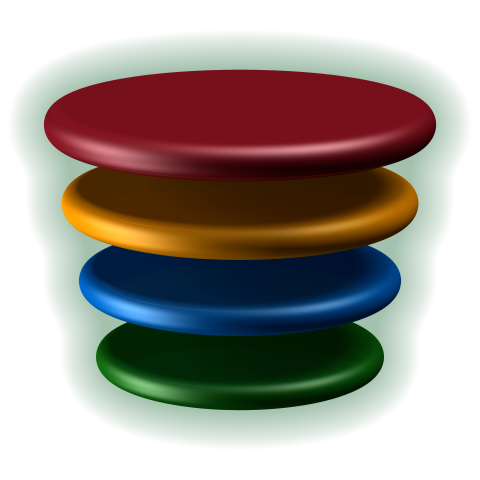
WebP (69KB)
WebP (3.6MB)
Different resolutions
Alternatives are available in a range of smallish resolutions:
PNG: 8² 12² 16² 20² 24² 32² 36² 57² 60² 64² 70² 72² 76² 96² 114² 120² 128² 144² 150² 152² 180² 192² 256² 310²
Lighter variant (better for light background)
Glow as part of the image, lighter
The default colours are a little dark on a light background as it’s self-shadowing.
Lightened versions the square renditions exist that are suited for lighter backgrounds where adaptation makes the default colours look dark; the web site uses these lighter versions for the navigation when not in “dark mode” — on a dark background the lightened versions look washed out.

WebP (8KB)
48×48 (7.7KB)
WebP (3.1KB)
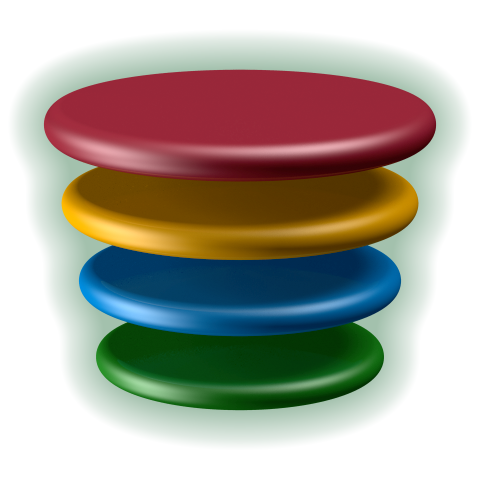
WebP (94KB)
WebP (5.8MB)
Alternatives are available in a range of smallish resolutions:
Monochrome version
Glow as part of the image, monochrome
The varying colours can map strangley to a monochrome representation; here therefore is a version with the winks a uniform grey colour.

WebP (4.8KB)
48×48 (7.1KB)
WebP (1.8KB)
144×144 (18KB)
WebP (8KB)
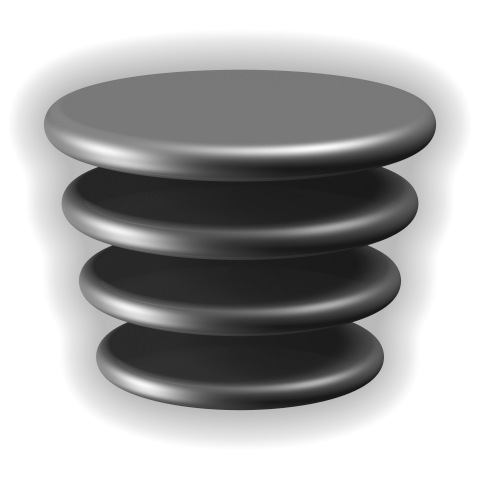
WebP (49KB)
WebP (3.1MB)
Half-toned version (for merchandise)
Glow as part of the image, half-toned
Some places one might want to reproduce the logo use processes that may be incompatible with transparency — notably on T-shirts, drinking receptacles, etc. The following versions are variants of the 4800×4800 image with the glow effect reproduced as a half-tone pattern, which should work better in these situations (the fine half-tone for larger reproductions, the coarse half-tone for smaller ones). The assumption is that high resolution is suitable for print jobs, so smaller versions are not provided.
Glow as a post-process effect
Glow as post-process
In some cases for web use, it can be more helpful to apply the glow as a CSS post-process effect; this allows better overlapping with other object, for example. Safari, in particular, seems prone to clipping the edges of the effect, so it’s a bit fragile compared with integrating it in the image. Here, then, are plain images without the glow — to which the glow can then be applied in CSS. Without the glow, the “Cambridge” connection disappears; the glow is considered part of the logo, so these aren’t intended to be used “naked". The glow can be relatively slightly larger with smaller images to increase visibility (not used for the image-only version where there is less risk of overlap with other objects hiding the glow). Again, please pick a suitable resolution to manage file size.
These use a Cambridge Blue drop shadow (tripled for density):
filter:drop-shadow(0px 0px npx rgb(163,193,173)) × 3, where
n is shown below.

80² (11KB) WebP (5.3KB) (n=1.5)
120² (17KB) WebP (9.1KB) (n=2.25)
160² (23KB) WebP (14KB) (n=3)
4000² (4.2MB) WebP (3.1MB) (n=50)
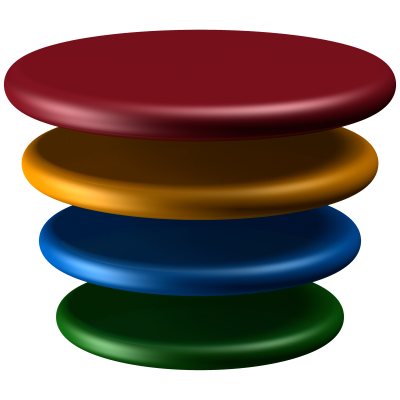
WebP (53KB)
(n=5)
Alternatives are available in smallish resolutions, sized to allow the glow to be added (not tightly cropped):
PNG: 8² 12² 16² 20² 24² 32² 36² 57² 60² 64² 70² 72² 76² 96² 114² 120² 128² 144² 150² 152² 180² 192² 256² 310² 480² 4800²
WebP: 8² 12² 16² 20² 24² 32² 36² 57² 60² 64² 70² 72² 76² 96² 114² 120² 128² 144² 150² 152² 180² 192² 256² 310² 480² 4800²
Lighter version for light backgrounds

80² (13KB) WebP (6.2KB) (n=1.5)
120² (20KB) WebP (12KB) (n=2.25)
160² (28KB) WebP (18KB) (n=3)
4000² (7.2MB) WebP (5.2MB) (n=50)
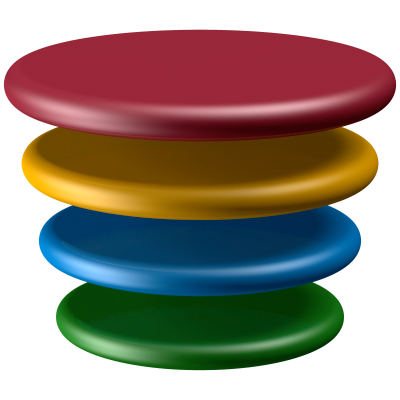
WebP (79KB)
(n=5)
Monochrome version
Glow as post-process, monochrome
Note: These versions have not been tightly cropped, so the images contain space for the glow.

96² (5.6KB) WebP (2.9KB) (n=1.5)
144² (9.1KB) WebP (4.8KB) (n=2.25)
4800² (2.8MB) WebP (1.6MB) (n=50)

WebP (27KB)
(n=5)
Colour-reduced line art versions
Colour-reduced versions
While the pot of winks works best as a “realistic” image, not all printing processes support a full range of colours. In some cases one of the alternative logos would be a better option, but for consistency of branding, simplified forms are available. Note that, without the colours drawing the connection to winks, the polite objects that the monochrome ones resemble are some designs of bottle stopper or honey dipper, and they resemble... some other objects commonly described as “ribbed"... as well, so please think carefully before using them and ensure that the context is obvious.
These are all resolution-independent line art; see the PNG generator if you need a specific resolution.
PNG generator
For convenience, this form converts the vector logos above to a requested size (and background colour), which can then be downloaded as a png (right click, or your browser’s equivalent, and “save image as” or similar). This conversion is performed entirely in your browser, so don’t blame me if the size you request is too big.